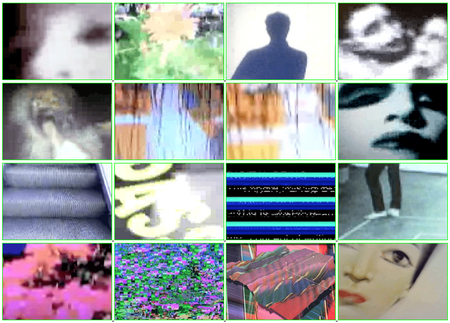.gif(t) economy series
.gif(t) economy is a work by The Artist 2.0. It is a series of short video loops, using appropriated images from a variety of sources, such as the internet, historical paintings, and tourist videos. These video loops are then saved in GIF form.
Formal and Subject Analysis
The GIFs in this series are short animations, which incorporate a range of subject matter. Art history and pop culture collide, where Francisco Goya's Saturn Devouring His Son is shown alongside entertainment figures such as Marilyn Manson. Images are also appropriated from the web or other videos, including avant-garde film. All GIFs are of poor quality, with some videos being recorded on a mobile phone, and are extremely pixelated. This is a defining quality of The Artist 2.0's glitch aesthetic.
.gif(t) economy refers to the early Net art of the 90's[1], a decade when computers and the internet were becoming more wildly accessible. The 90's proved that the internet was growing as a part of mass media, and it would only continue to make a bigger impact. The time in which this piece was created, the mid-2000's, the internet had transformed into an integral part of our society and everyday lives. However, the consequence is that we are bombarded with so much excess. The year 2005, YouTube was still in its infancy, but it created an easy platform for virtually anyone to share anything. .gif(t) economy exudes this excessive nature of the internet. It is an amalgamation of any, seemingly random content thrown together into an interactive and hyperactive viewing experience. The quick flashes of the GIFs mimic the attention span of our minds on the internet, and the inclusion of so many GIFs satiates our need for always wanting more content.
Technical Execution
Many of the GIFs in this series were filmed using a mobile phone. Other images and video loops were appropriated from longer video clips, from which stills were selected. The stills were then uploaded to GIF-making animation software to create the brief and rapid moving images. As with most digital art, the GIFs were distributed by the artist into different cultural contexts across the internet.[2]
References
Author
Kathleen Escanan
